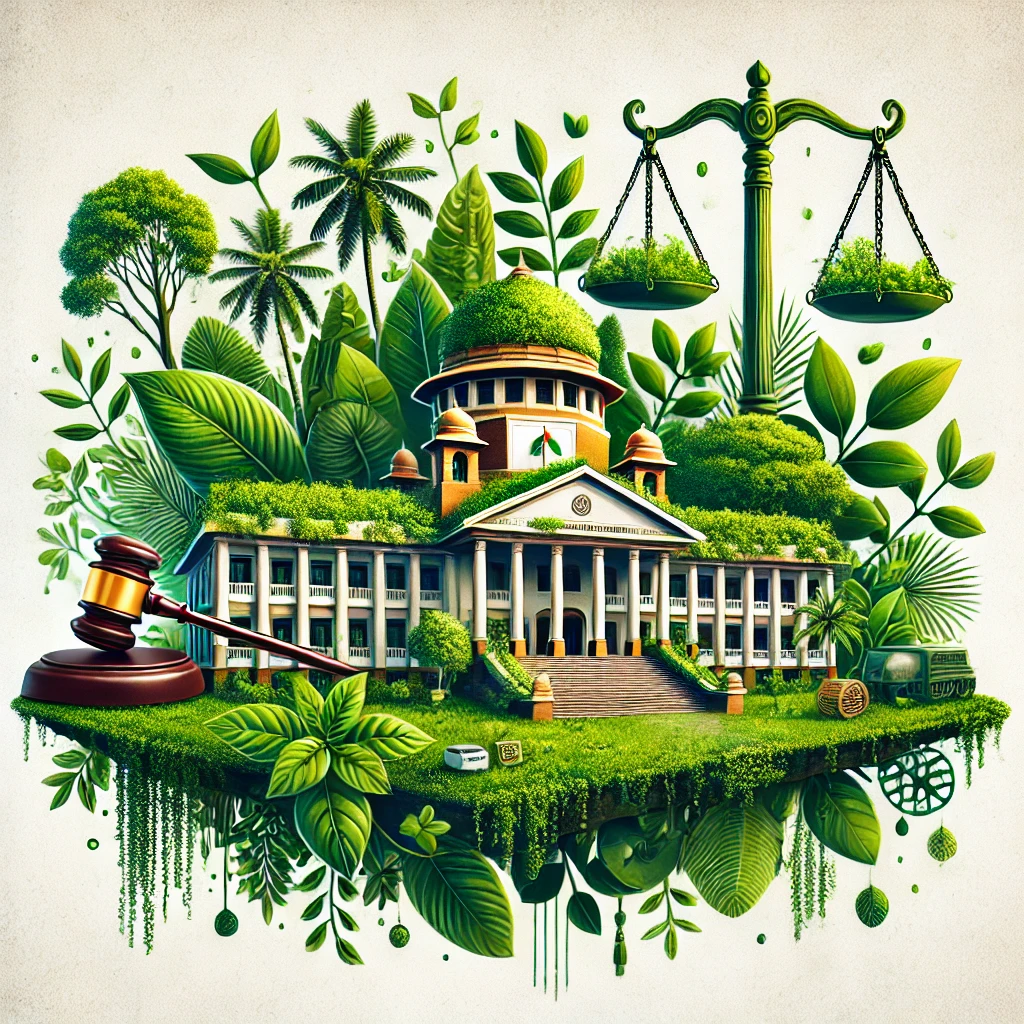Environmental laws at Indonesia
Indonesia, a vast archipelago consisting of over 17,000 islands, is home to one of the world's most diverse ecosystems, including tropical rainforests, coral reefs, and a rich array of wildlife. However, the country faces significant environmental challenges, including deforestation, pollution, and the impacts of climate change. Indonesia has enacted various environmental laws and regulations to address these issues, with mixed results in terms of enforcement and compliance. Below is an overview of key environmental laws and policies in Indonesia:
1. Environmental Protection and Management Law (UUPPLH)
The Environmental Protection and Management Law (UUPPLH) is the central piece of legislation governing environmental protection in Indonesia. Initially enacted in 1997, it was revised in 2009 to improve environmental governance.
Environmental Impact Assessment (EIA): The law requires that all development projects, particularly those with the potential to cause significant environmental impacts, undergo an Environmental Impact Assessment (EIA), known as AMDAL in Indonesia. This assessment is designed to identify and mitigate the potential negative effects of projects on the environment.
Pollution Control: The law establishes standards for air, water, and soil pollution and provides regulations on waste disposal and management.
Environmental Monitoring and Enforcement: It mandates the establishment of monitoring systems and outlines penalties for violations of environmental standards.
Public Participation: The law emphasizes the importance of involving the public in decision-making processes regarding environmental issues, especially in projects that could affect local communities.
2. Forestry Law (Undang-Undang Kehutanan)
Indonesia's Forestry Law regulates the management and protection of forests, which are vital to the country's biodiversity and carbon storage efforts. The law is central to addressing deforestation, one of the most significant environmental issues in Indonesia.
Forest Land Use: The law establishes rules for the classification and use of forested areas, including conservation forests, production forests, and protected forests. It also provides regulations for the granting of forest use permits.
Conservation and Restoration: The law mandates the establishment of conservation areas, such as national parks and wildlife reserves, and promotes reforestation and the restoration of degraded lands.
Deforestation and Illegal Logging: The law includes measures to combat illegal logging and the illegal conversion of forests into agricultural or plantation lands, which has been a major driver of deforestation in Indonesia.
Sustainable Forest Management: It encourages sustainable forest management practices, including the use of forest resources for timber and non-timber products in ways that do not harm the ecosystem.
3. The Law on Spatial Planning (UU No. 26/2007)
The Spatial Planning Law governs land use and development across Indonesia, aiming to promote sustainable land use practices while minimizing environmental degradation.
Land Zoning and Development: The law establishes zoning regulations to guide the development of infrastructure, housing, industrial zones, and conservation areas.
Environmental Considerations: It requires that spatial planning take into account environmental factors, such as preserving ecosystems, preventing soil erosion, and protecting water resources.
Integration of Environmental Impact: The law emphasizes the integration of environmental impact assessments into land-use planning and development activities, ensuring that new projects align with sustainable land management practices.
4. The Water Resources Law (UU Sumber Daya Air)
Indonesia’s Water Resources Law regulates the management and use of the country’s freshwater resources, which are critical to the agriculture, energy, and daily needs of its population.
Water Quality and Availability: The law sets standards for water quality and aims to prevent water pollution from industrial, agricultural, and domestic sources.
Water Use Rights: It regulates the allocation of water use rights for agricultural, industrial, and domestic purposes, ensuring that water resources are distributed equitably and sustainably.
Protection of Watersheds: The law also focuses on protecting watershed areas and ensuring that they are managed in a way that maintains water quality and prevents erosion and flooding.
5. The Biodiversity Law (Undang-Undang Konservasi Keanekaragaman Hayati)
Indonesia’s Biodiversity Law was passed to protect and conserve the country’s rich biodiversity, which includes thousands of plant and animal species, many of which are endemic and endangered.
Biodiversity Conservation: The law provides for the protection of biodiversity through the establishment of conservation areas, such as national parks and nature reserves, where human activities are restricted.
Endangered Species Protection: It includes provisions to protect endangered species and prohibits hunting, capturing, or trading in wildlife listed as threatened or endangered.
Sustainable Use of Biodiversity: The law encourages sustainable practices for the use of biological resources, including sustainable fisheries, agroforestry, and ecotourism.
6. The Law on Environmental Damage and Environmental Restoration (UU No. 32/2009)
This law addresses the issue of environmental degradation and the restoration of damaged ecosystems.
Restoration of Damaged Environments: The law requires parties responsible for environmental damage, such as industrial operators or developers, to restore the environment to its original or a restored state after causing significant harm.
Polluter Pays Principle: The law follows the principle that those responsible for pollution and environmental damage should bear the costs of repair and mitigation.
Enforcement and Penalties: It outlines penalties for individuals or companies that violate environmental protection laws, including fines and imprisonment, in addition to requirements for environmental restoration.
7. The Clean Air Act
Indonesia’s Clean Air Act is part of the broader effort to combat air pollution in urban areas like Jakarta, which suffers from high levels of air pollution due to traffic emissions, industrial activity, and burning of biomass.
Air Quality Standards: The law establishes national air quality standards to protect public health and the environment.
Pollution Control Measures: It sets emission standards for vehicles and industries, with provisions for regular monitoring and enforcement.
Reduction of Emissions: The law encourages the use of cleaner technologies in industry and transport, including the adoption of alternative energy sources and the reduction of air pollutants.
8. The Hazardous and Toxic Waste Management Law (UU No. 18/2008)
The Hazardous and Toxic Waste Management Law regulates the handling, disposal, and treatment of hazardous waste, which poses significant risks to public health and the environment.
Management and Disposal: The law provides guidelines for the safe handling, storage, and disposal of hazardous and toxic waste from industrial activities, healthcare facilities, and other sources.
Public Health and Safety: It aims to prevent contamination of water, soil, and air by hazardous substances and requires companies to implement waste management plans.
Waste Treatment and Recycling: The law encourages the recycling and treatment of hazardous waste to reduce the environmental impact and promote the sustainable use of resources.
9. The Climate Change Law (Rencana Aksi Nasional Adaptasi Perubahan Iklim)
Indonesia has adopted policies to address climate change and is committed to reducing its greenhouse gas emissions under the Paris Agreement. The country is both highly vulnerable to climate change (due to its coastal and low-lying areas) and a significant emitter of greenhouse gases, primarily from deforestation and agriculture.
Climate Adaptation and Mitigation: The law emphasizes both adaptation strategies (e.g., protecting vulnerable communities from climate impacts) and mitigation efforts (e.g., reducing emissions from deforestation and land-use changes).
Greenhouse Gas Reduction: Indonesia has committed to reducing its greenhouse gas emissions by 29% by 2030, with a target of up to 41% with international assistance.
Resilience Building: The law promotes building resilience to climate change impacts, such as sea-level rise, extreme weather events, and shifting agricultural patterns.
10. The Environmental Management Agency (BAPENAS)
Indonesia's National Development Planning Agency (BAPPENAS) plays a central role in formulating national environmental policies and coordinating environmental projects. BAPPENAS works in collaboration with various governmental and non-governmental organizations to integrate environmental considerations into national development plans.
Key Environmental Challenges:
Deforestation: Indonesia has one of the highest rates of deforestation in the world, driven by the palm oil, timber, and paper industries, as well as illegal logging and land conversion for agriculture.
Forest Fires and Peatland Destruction: The annual occurrence of forest fires, often linked to the clearing of land for plantations, contributes to air pollution and environmental degradation.
Pollution: Air and water pollution, especially in urban areas, is a significant environmental concern, primarily from industrial activities, traffic emissions, and waste management issues.
Marine and Coastal Pollution: The rapid growth of coastal development, along with plastic waste and unsustainable fishing practices, threatens marine biodiversity.
Climate Change: Indonesia is highly vulnerable to the impacts of climate change, including sea-level rise, more frequent and intense storms, and disruptions to agriculture.
Conclusion:
Indonesia has made significant strides in developing a framework of environmental laws and policies to address its complex environmental challenges. However, the effectiveness of these laws is often hindered by weak enforcement, corruption, and a lack of resources for proper monitoring and compliance. Despite this, there are ongoing efforts to improve environmental governance, increase public awareness, and secure international cooperation in addressing key environmental issues such as deforestation, pollution, and climate change.




























0 comments